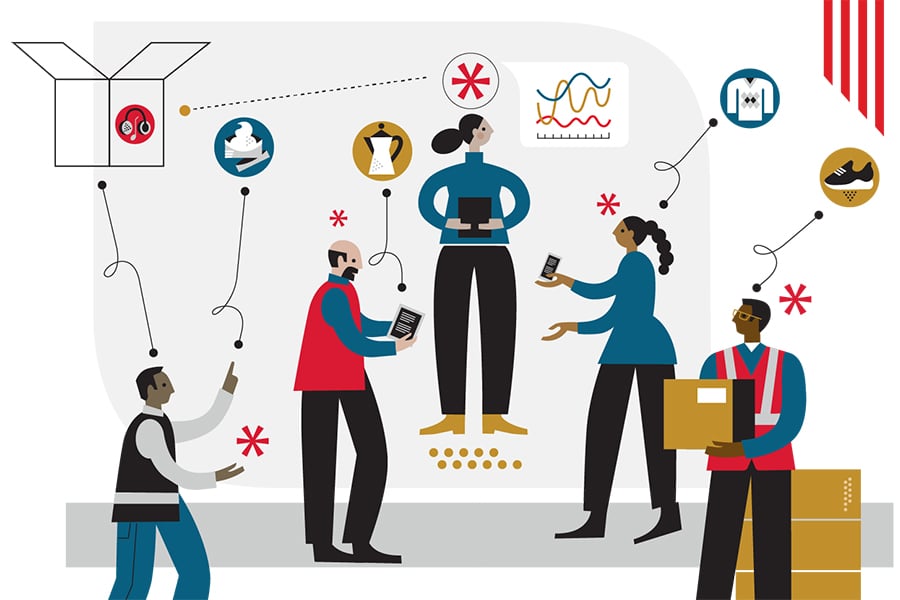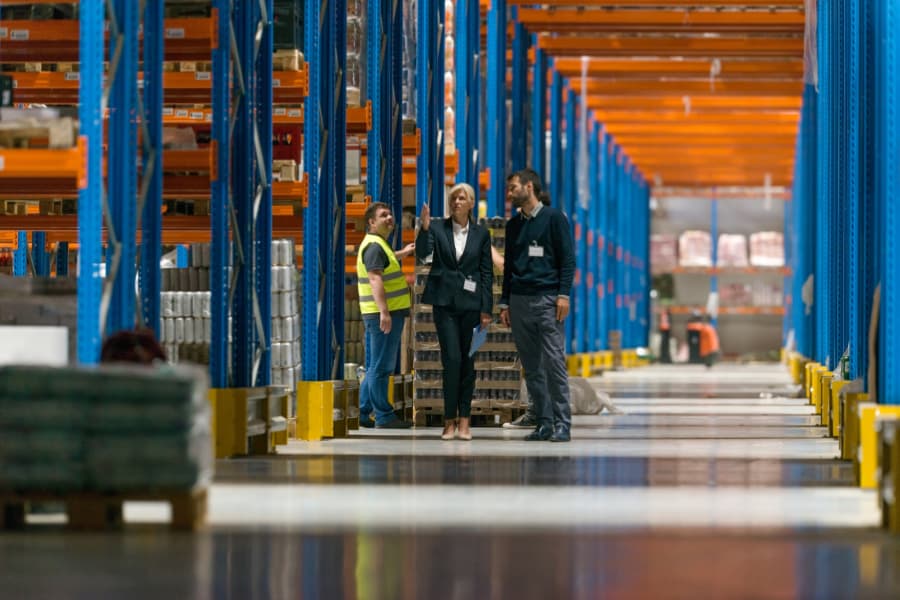Cybercriminals are always lurking around, sniffing out vulnerabilities that can bring your business to its knees. Supply chains are an attractive target—logistics is a profitable industry and vital part of the economy, and bad actors can cause quite a disruption. Advances in supply chain technology, including automation and artificial intelligence, create an extensive digital footprint.
Because the logistics component of supply chain management relies on data processing and information sharing, the door is open to more cybersecurity risks. Differing levels of cybersecurity among supplier partners result in weak network links that can be exploited. According to the IBM Security X-Force Threat Intelligence Index 2023, manufacturing was the target for 30% of attacks, and 27% included demands for money, using ransomware, compromised email, or distributed denial-of-service attacks.
With the cost of a data breach reaching an average of $4.45 million, it’s time for supply chain leaders to take a hard look at their cybersecurity measures and put appropriate stop-gaps in place. In this article, we’ll define cybersecurity, why it is vital to supply chains, and how to protect yourself from prying eyes.
What is cybersecurity?
Broadly defined, cybersecurity is the protection of data, devices, and networks from criminal use and unauthorized access, per the Cybersecurity & Infrastructure Security Agency. It also includes safeguards to keep information confidential and available while ensuring its integrity.
Because the supply chain comprises multiple vendors and other third-party partners, a breach in any area can unleash a domino effect of mayhem and destruction. Without protection, every point of the supply chain is vulnerable to attack. Software is the main entry point for these criminals, injecting malware via malicious updates or compromising code.
The results of a cyber attack? More disruption in an era already filled with it and financial loss for every business involved in your supply chain. The most common threats to supply chain cybersecurity are ransomware attacks, data breaches, and malware infection. Vulnerabilities can occur anywhere, and one of the keys to effective cybersecurity is to know what is at risk, where it is at risk, and how it is at risk.
Supply chain cybersecurity is essential for more reasons than you think
Effective supply chain management depends on the free exchange of sensitive and confidential information such as financial data, customer information, operational details, and intellectual property involving product design, new initiatives, etc. Protecting these assets is paramount, but a cybersecurity breach of any kind can also affect several operations aspects.
Business continuity
When your supply chain is hacked, it disrupts operations, creating production delays, late delivery, and a customer service quagmire that will be challenging to solve. Robust cybersecurity measures can mean the difference between keeping your business running during disruptions or temporarily shutting down.
Your business reputation
A security breach within your supply chain can easily damage your company’s reputation. Trust is at the core of your supplier and customer relationships. While many factors create trust, Merkle’s 2023 B2B Superpowers Index points to the need for your buyers to feel safe, which also applies to your business partners. If you can’t protect sensitive data, you’ll lose customers and business opportunities.
Regulatory compliance
The Federal Trade Commission Act Section 5 is a law that requires appropriate security measures. Make no mistake: the FTC will impose penalties. While reasonable and necessary security practices are mandated, they are undefined, so investing in a robust cybersecurity program is critical. Many states have enacted their own cybersecurity laws, per the National Conference of State Legislatures, and violating them can result in legal and financial penalties.
Intellectual property
You know you’re in a competitive business environment. Keeping your edge relies on protecting your intellectual property – product designs, patents, and proprietary technology. But realize that threats don’t just come from random cybercriminals. They also come from disgruntled or unethical employees. Infosecurity Magazine found that 70% of intellectual property theft happens within 90 days of employees submitting their resignations. Another threat comes from competitor espionage. Your cybersecurity measures help keep your intellectual property safe from everyone.
Supplier trust
Trust is crucial in supply-chain relationships, and not just because of your reputation. From your suppliers, trust gets you better pricing and creates new opportunities, among other benefits. Because the best-run supply chains operate on shared data, your suppliers must be assured their data is safe.
Finances
With the average cost of a supply chain breach in the multimillions, just one incident can mean significant financial loss. In addition to lost business and productivity, and the reputational damage, you can face lawsuits, regulatory fines, and the cost of remediation. You face two choices: beef up cybersecurity or pay for the lack of it later.
Supply chain resilience
A protected supply chain is a resilient one. With a cybersecurity program that protects digital assets, your organization can better withstand disruptions and quickly recover from cyber attacks.
Risk mitigation is a significant cybersecurity component. You know that your supply chain is vulnerable, and implementing cybersecurity measures reduces the threat risk and helps your organization respond appropriately and effectively if an incident occurs.
How to protect your supply chain from cyber attacks
Cybercriminals are constantly honing their tactics. Your cybersecurity plan should include:
- Risk assessments that include the systems and processes employed by supplier partners. Vulnerabilities should be identified and prioritized by business impact.
- Set protocols internally, and with suppliers, set clear guidelines that include access control, data protection, and response. Your vendors should have the requisite security measures in place.
- Continuous monitoring of your supply chain is vital for quick detection and stopping security breaches, including malicious software. Create an incident response plan and conduct training.
- Educate suppliers because your security posture is affected by them. Educate them, point them to resources, and encourage strong security measures and sufficient monitoring.
- Stay up-to-date by regularly reviewing and updating your cybersecurity policies to stay one step ahead of cybercriminals and maintain supply-chain security.
Some additional tips include:
- Restrict access. Limit access to confidential information. Implement least privileged access, which assigns permissions to only those who really need them, to mitigate risk. Many cyber attacks are triggered by unnecessary access by employees and third parties.
- Segment your network. Create network zones based on function rather than allowing third-party access to every part of your network.
- Create decoys. Honeytokens are data decoys that draw hackers toward information that seems valuable, but is not. Because you constantly monitor, when cybercriminals jump on these “assets,” you’ll quickly detect their presence and fight back.
- Tackle the fourth party problem. Supply chains are multi-tiered; your vendors have vendors. Mitigating the risk from these fourth parties can be difficult, so encourage your suppliers to monitor and track their suppliers.
Manage your risk, protect your supply chain
The early stages of supply chain management focused on increasing efficiency and reducing costs by optimizing internal processes. Today’s supply-chain leaders remain focused on the same objectives, but today’s digital environment makes managing cybersecurity risk essential to supply-chain success.
As supply chains digitize and modernize, organizations are challenged to identify and manage risk, assess software, and receive timely threat intelligence, which is all necessary for operational resilience. A robust cybersecurity stance is not an option and requires a proactive, well-defined approach.




